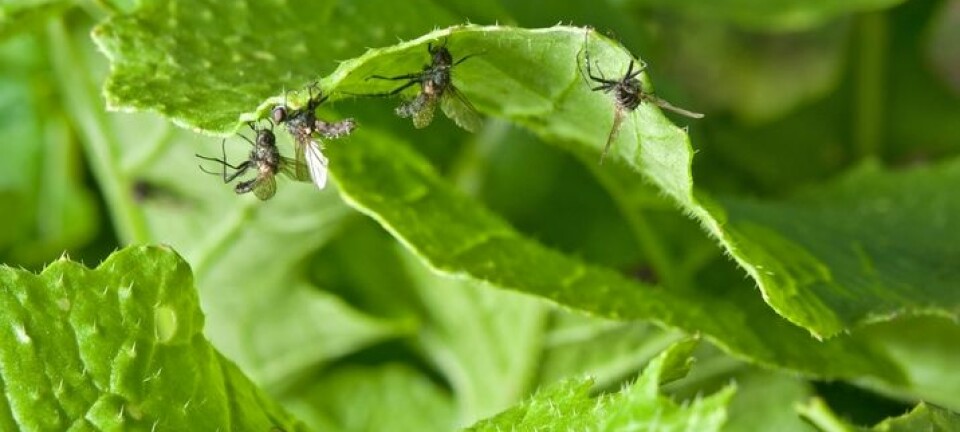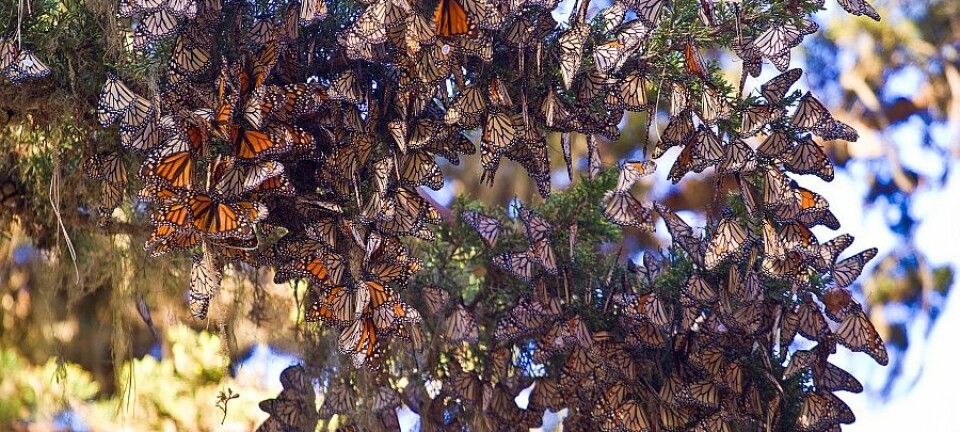
Why insects always hide in the dark
It is no coincidence that insect larvae always hide away in dark corners. Scientists have now discovered how the larvae know where it’s best to hide away.
When insect larvae such as caterpillars or fly maggots have been fattened up, they find a dark corner where they can pupate. Here they undergo the next stage in their development, safe from hungry predators and the sun’s glare.
This is a very simple and clever survival strategy, but how on Earth do the insects know that it’s best to hide in the dark? It’s not as if they heard about it from their mothers.
Now a new study shows that insect larvae have innate instincts that lead them toward the dark spots.
These instincts are controlled by hormones that are produced in the insect larvae’s childhood and which affect certain light sensors on the insect’s body.
The Danish researcher in this international study sees great potential in the new discovery:
If the peptide hormone is not present, two things happen: firstly, the maturation process for the fruit flies slows down and, secondly, their preference for the dark disappears.
”It’s pretty cool to be able to explain the mechanism behind a basic behaviour in insects, which we have so far only been able to observe without really understanding,” says Associate Professor Kim Furbo Rewitz of Copenhagen University’s Department of Biology, Section for Cell Biology and Neurobiology.
Preference for darkness caused by hormone
In the study, researchers identified the role that the so-called prothoracicotropic hormone (PTTH) plays in fruit flies’ preference for darkness.
The actual objective of the study was to understand the role of the hormone in sexual maturation, but after a while the researchers discovered the dual function of the hormone.
PTTH is a so-called peptide hormone that regulates the production of another so-called steroid hormone, which activates sexual maturation in fruit flies in the same way that oestrogen and testosterone do in humans.
When the nerve cells cannot pick up PTTH, both of the light-sensitive systems stop functioning and the insect will no longer prefer darkness.
However, the researchers discovered that the hormone also plays a role in the survival strategy that ensures the ideal survival conditions for the insect larvae by hiding in the dark.
”If the peptide hormone is not present, two things happen: firstly, the maturation process for the fruit flies slows down and, secondly, their preference for the dark disappears,” says Rewitz.
Fruit flies either matured or became indifferent to light
To figure out the function of PTTH in fruit flies and other insects, the researchers manipulated various genes that are involved in mechanisms associated with the hormone.
In one part of the study, they tried to genetically remove the molecules that take up PTTH in the fruit fly cells that are responsible for producing steroid hormones. The experiment slowed down the fruit flies’ sexual maturation process, but it did not affect their preference for darkness.
Next, the researchers genetically removed the molecules that take up PTTH in nerve cells.
”When we removed the PTTH receptors in the nerve cells, we observed no change in the sexual maturation of the fruit flies, but they lost complete interest in the darkness,” says Rewitz.
This enabled the team to conclude that the hormone had a dual function in fruit flies, each with their own signalling pathways.
Flies register light at the rear
The link between light sensitivity, nerve cells and peptide hormones can be found in two different light sensor systems that insect larvae use to detect light and dark.
- One system consists of a primitive ’eye’ in the head, which detects whether it’s light or dark.
- The other system consists of a series of light sensors spread across the insect’s body that are capable of ‘feeling’ light.
Rewitz suspects that the latter of these two systems is designed to enable insect larvae to detect light and dark even when their entire heads are buried in food. This means that if the larvae’s rear end is exposed to light, it is instinctively pulled back into the insect’s body.
The blocking of the nerve cells’ ability to pick up PTTH put both systems out of action.
“When the nerve cells cannot pick up PTTH, both of the light-sensitive systems stop functioning and the insect will no longer prefer darkness.”
Clever dual function
Rewitz is impressed by the clever way in which insects have managed to use PTTH as a neurotransmitter in both systems, i.e. the one that controls when the insect goes through the various stages of development, as well as the one that regulates their preference for the dark.
“The two are linked. When the insect larvae have grown big and fat it is time for them to go into hiding, making it harder for predators to find them while they undergo metamorphosis at the pupal stage,” he says.
“This is where PTTH enters the picture, stimulating not only the onset of the next stage of development, but also the desire to find a dark place in which to hide.”
-------------------------
Read the Danish version of this article at videnskab.dk









